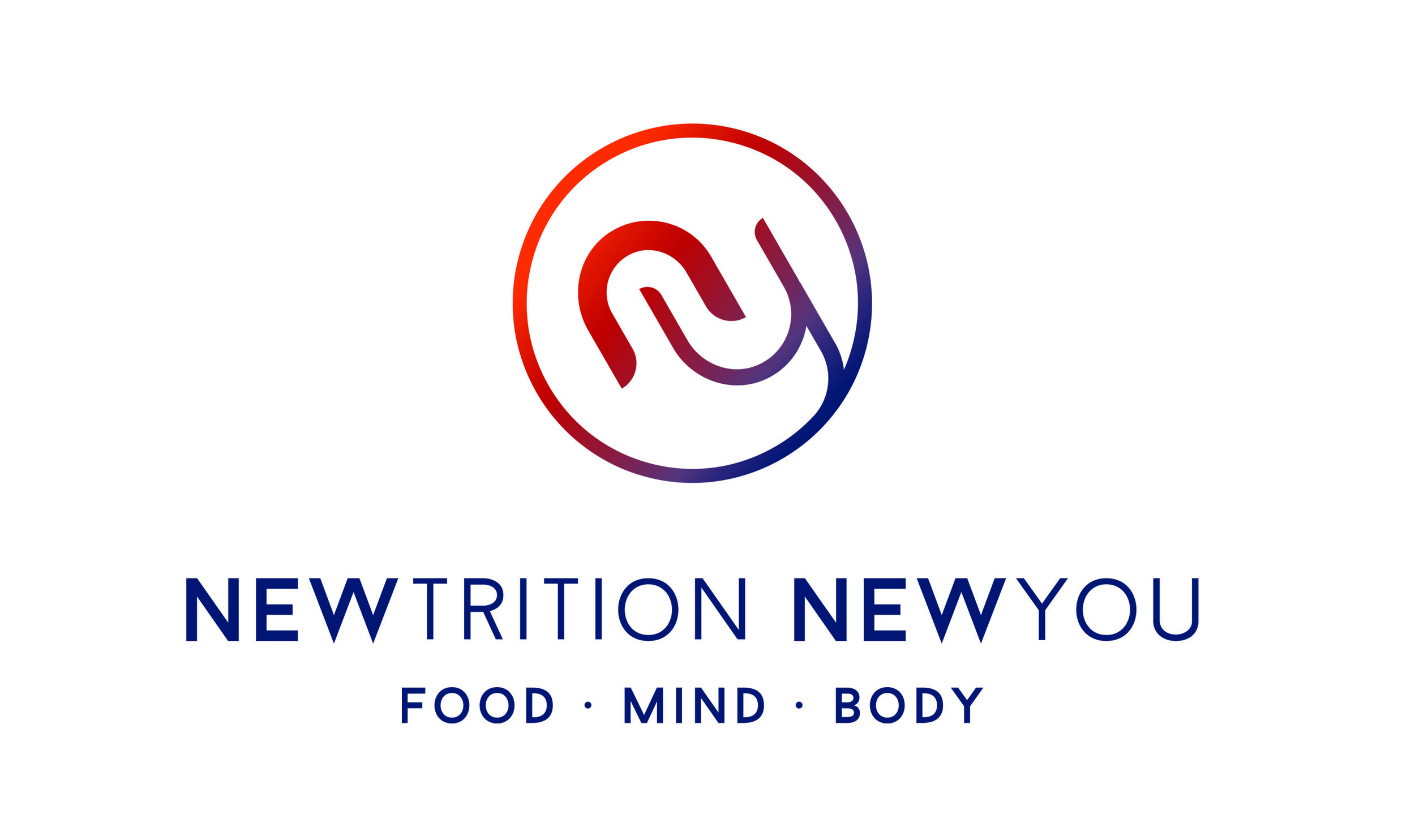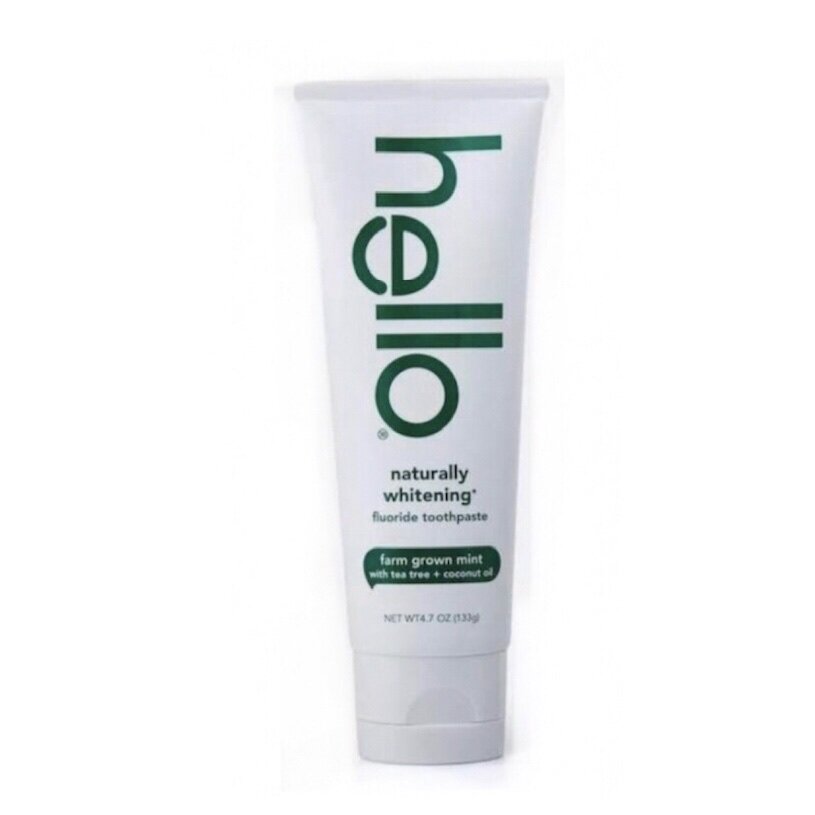IN WITH THE NEW: Toothpaste
Welcome to my weekly featured ”IN WITH THE NEW” CLEAN SWAP! This week we are taking a closer look at tooth paste!
I’m always fielding questions from clients and friends about how they can swap out some of their favorite products for safer, toxin-free options without a loss in quality, taste, or performance (depending on the product). Every week, I cover food, cosmetics, personal care, cleaning and laundry products, and even behavior, so if you enjoy these Clean Swaps, please follow me on Instagram and sign up for my 360° OF WELLNESS Newsletter (⬅️by clicking on this link to the left) so that you never miss a new one.
Let’s talk ToothPaste😬🦷
You brush your teeth twice a day… at least (I hope!). With toothpaste.
After all, the dentist told you to. And he even gave you a little sample tube of Crest or Colgate, so it must be good for you.
Not only that, but toothpaste goes in your mouth, so the FDA would surely ban any toxic ingredients in there, right?
I know what you’re thinking. For God’s sake, is nothing sacred anymore?
Apparently, not so much.
SO WHAT’S SO BAD ABOUT toothpaste? 💁♀️
Besides you putting a dollop full of toxins in your mouth? You know, where they can be absorbed into the bloodstream most fully and rapidly, without ever swallowing.
But it’s just a dollop!
Yes, but how many of these dollops are going in your mouth over your lifetime? If you do a little math, roughly about 20 gallons! So although a few dollops may not cause much harm, they will most certainly add to your body’s toxic load over time.
So let’s take a closer look at what It is that you're putting in your mouth several times every day:
🚫 FLUORIDE is one of the main ingredients in 95% of all toothpaste sold in the U.S. The fluoride that is used in toothpastes is called “sodium fluoride” and is considered an over-the-counter drug by the FDA. In fact, if you look at your toothpaste, chances are that it has a warning label, which is required by the FDA on all fluoride toothpastes and dental care products. This warning reads:
“Keep out of reach of children under 6 years of age. If you accidentally swallow more than used for brushing, seek professional help or contact a poison control center immediately.”
Although you will find most holistic practitioners arguing against the use of fluoride in any form, you may be surprised to learn that I am not going to do that.
My research has led me to believe that the topical use of fluoride (e.g., toothpaste) can, in fact, be beneficial in preventing cavities. The danger lies in using and/or ingesting too much toothpaste. This is especially risky for children.
The other issue is that fluoride is added to more than 74% percent of the water supply in the U.S. and on top of that, parents are encouraged to give their children a multivitamin containing fluoride. And don’t forget about that bi-annual fluoride treatment at the dentist’s office!
When you put that all together (there are a number of other sources too!), it’s no wonder that “dental fluorosis,” a condition that is the result of excess fluoride in the body, affects one in four Americans, ages 6-49 according to WebMD and over 41% of adolescents according to the CDC.
Dental fluorosis causes discoloration and spots on tooth enamel. But what about the effects of excess fluoride in the body that cannot be seen? It seems naive to assume that excess fluoride isn’t impacting other developing tissues when it is visibly damaging the teeth by some biochemical mechanism.
Other risks from excess fluoride include stomach ailments, acute toxicity, skin rashes (perioral dermatitis), and impairment in glucose metabolism. Fluoride also accumulates in the body over time. Healthy adult kidneys excrete 50-60% of the fluoride ingested each day with the remainder accumulating in the body, mainly in calcifying tissues such as the bones and pineal gland. Infants and children take up to 80% of ingested fluoride into their bones, which steadily increases in concentration over a lifetime.
I’m not a doctor or a dentist, but based on my research, here’s my bottom line on fluoride:
If your state has fluoridated water (and you drink it), you may want opt for a fluoride-free toothpaste.
If you choose a toothpaste containing fluoride, make sure to only use a pea-sized amount (not a mouthful of swirls, like you see in the toothpaste commercials) and rinse well.
Supervise your kids carefully when they are brushing their teeth.
Steer clear of ingesting fluoride in water, supplements, or in any other way. The benefit of fluoride is topical not systemic.
🚫 TRICLOSAN is added to personal care products to reduce or prevent bacterial contamination. However, it bioaccumulates in the body and has been linked to a decrease in thyroid hormones, an increase in antibiotic resistance, as well as tumors in mice. A recent study published in Science Translational Medicine also found that triclosan altered gut microbiota and contributed to colon inflammation in mice. Although the FDA banned the use of triclosan in body wash and soaps, it is still used in the Colgate Total line of toothpastes, according to Consumer Reports.
🚫 SODIUM LAURYL SULFATE (SLS) is the ingredient that makes toothpaste foam and was originally used to clean floors. It is known to cause microscopic tears in the mouth (which can lead to canker sores). It can also mimics estrogen, which can mess with your hormones. Look for glycyrrhizin, a licorice root derivative, as a healthier alternative.
🚫 PROPYLENE GLYCOL is the main active ingredient in antifreeze and is used to soften cosmetic products. It can damage the central nervous system, liver and heart. high levels may contribute to blood and kidney disorders.
🚫 ARTIFICIAL SWEETENERS, like sorbitol, a liquid that keeps toothpaste from drying out and a laxative that can cause diarrhea in children, and saccharin, which has been linked to bladder cancer, brain tumors and lymphoma in rodent, are added to toothpaste to make it taste better. Choose products that contain natural sweeteners, like stevia or xylitol, which has been shown to also prevent tooth decay by increasing saliva, and thus decreasing bacteria in the mouth.
🚫 ARTIFICIAL COLORS are generally derived from coal tar. We don’t need to have technicolor toothpaste and neither do your kids… especially, your kids! Artificial colors have been linked to hyperactivity, anxiety, migraines and even cancer. If your toothpaste contains these, keep shopping!
READY FOR THE CLEAN SWAP?🙋♀️
HELLO
Oral Care Naturally Whitening Fluoride Toothpaste
Vegan, SLS Free, Farm Grown Mint with Tea Tree Oil & Coconut Oil
Check out Hello Oral Care Naturally Whitening Fluoride Toothpaste It contains the topical fluoride you need to protect against cavities and a calcium mineral blend to naturally whiten teeth. But what’s most important is what this toothpaste lacks: peroxide, dyes, SLS, paraben, triclosan, preservatives, gluten, artificial sweeteners and artificial flavors.
Hello is made in the USA, vegan, cruelty-free, never tested on animals, and is Leaping Bunny Certified and PETA recognized.🐰
I like it because it whitens naturally while protecting against cavities abs strengthening enamel and has a subtle, but peppy flavor that comes from farm-grown peppermint
PREFER TO GO FLUORIDE-FREE?
Here are three of my favorite fluoride-free options.
Do you have a favorite clean brand?
Send me a message or leave a comment below and share what it is. If I feature it, I’ll give you credit and may even send you a free gift!
If you enjoyed this weeks’s Clean Swap, share it with a friend and sign up for my 360° OF WELLNESS Newsletter (below) so you never miss a new one.e.
ABOUT THE AUTHOR: Victoria Gregory is an Integrative Nutritionist and founder of NEWTRITION NEWYOU. Her focus—whether with private clients, readers of her blog, or her followers on social media— is whole body wellness, incorporating whole-food nutrition, supplementation, exercise, toxin-free living, and mindset coaching. Victoria’s personal mission is to help make the world a healthier place, one person at a time, and she has helped thousands of people find joy and self-love through better eating habits and mindfulness. Learn more about Victoria.












